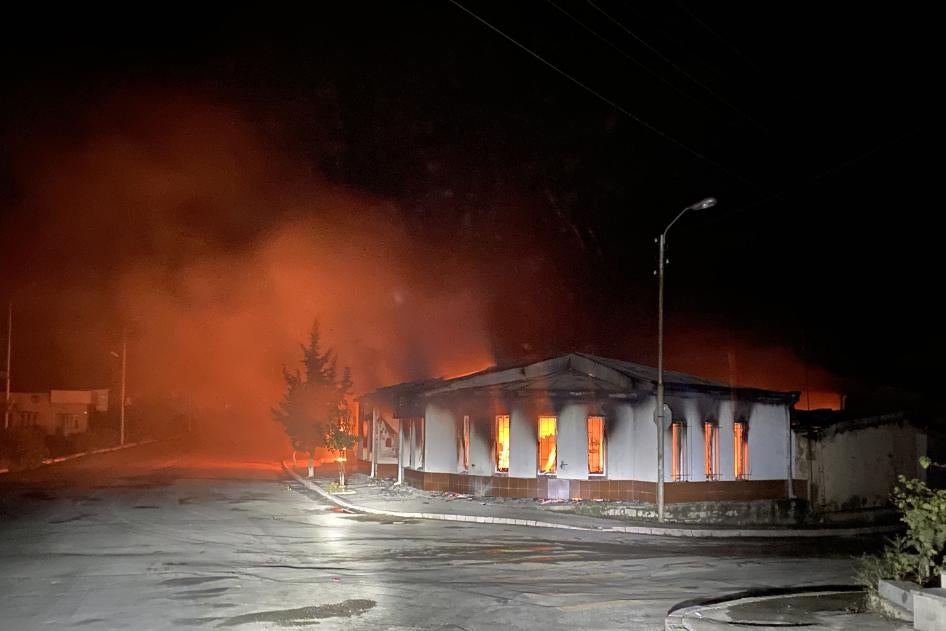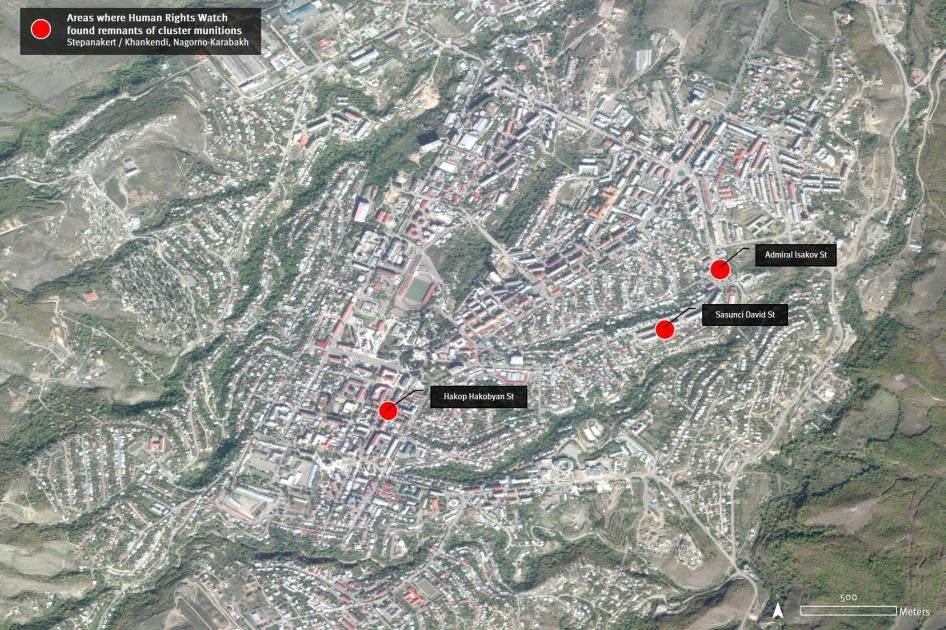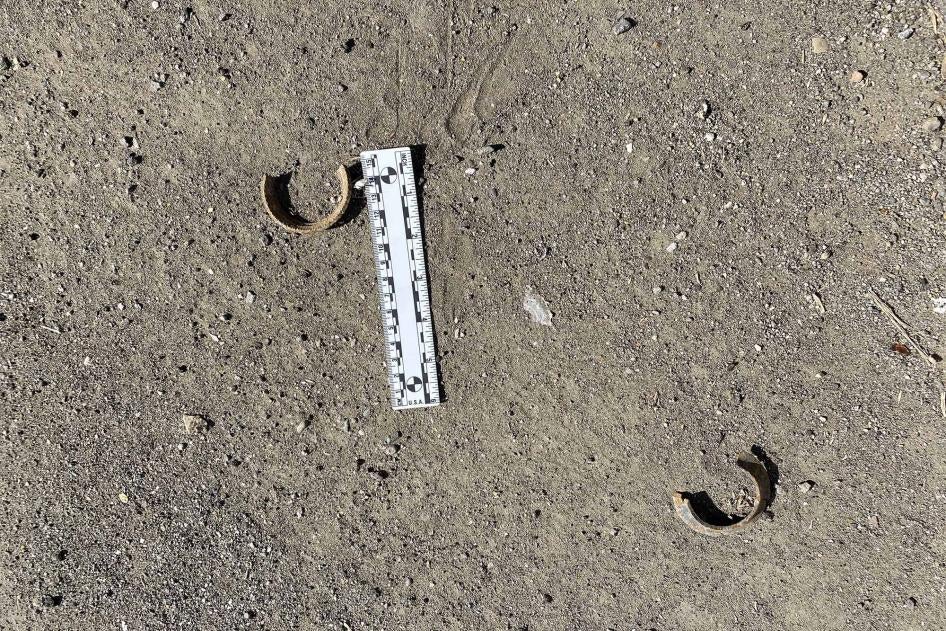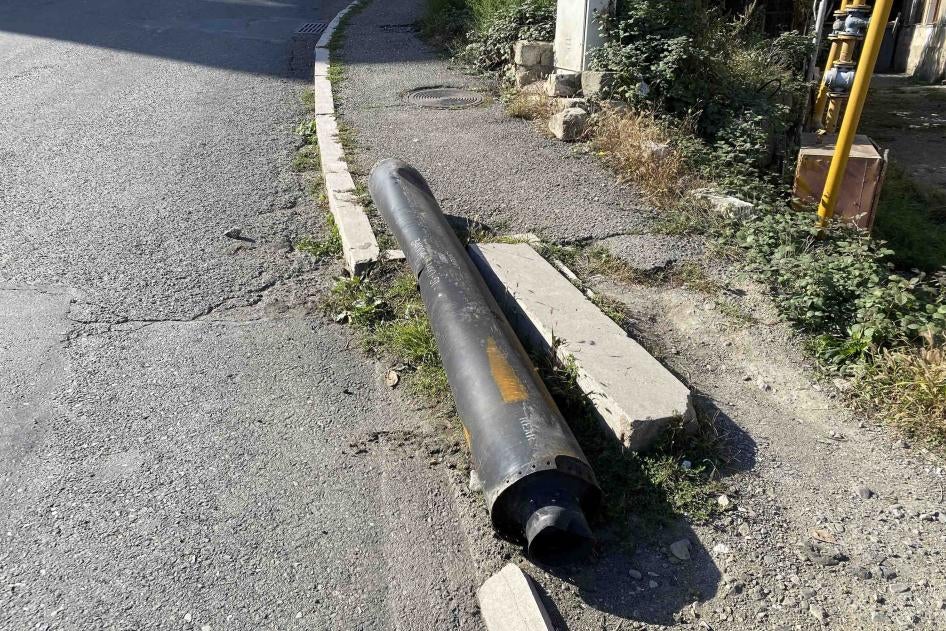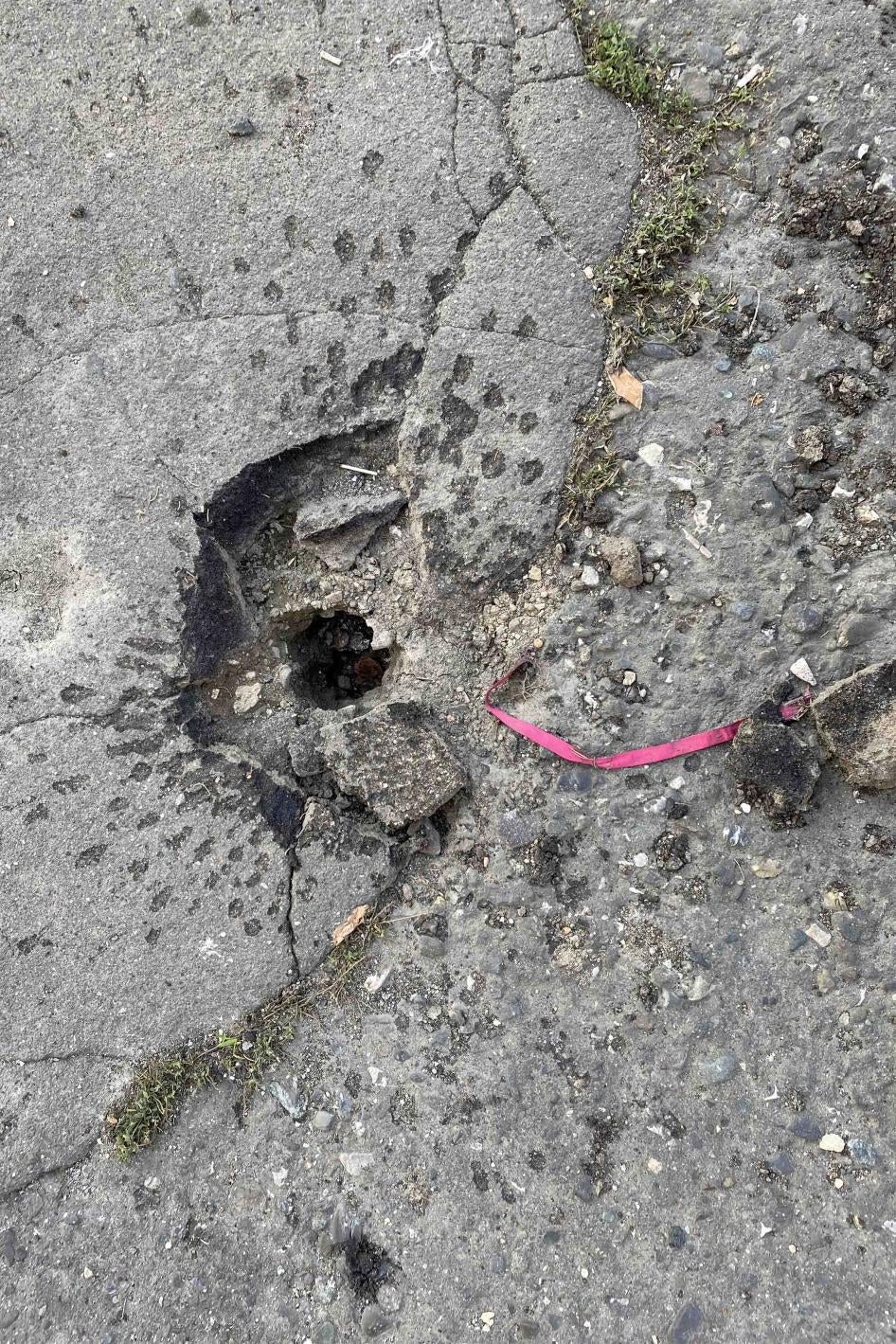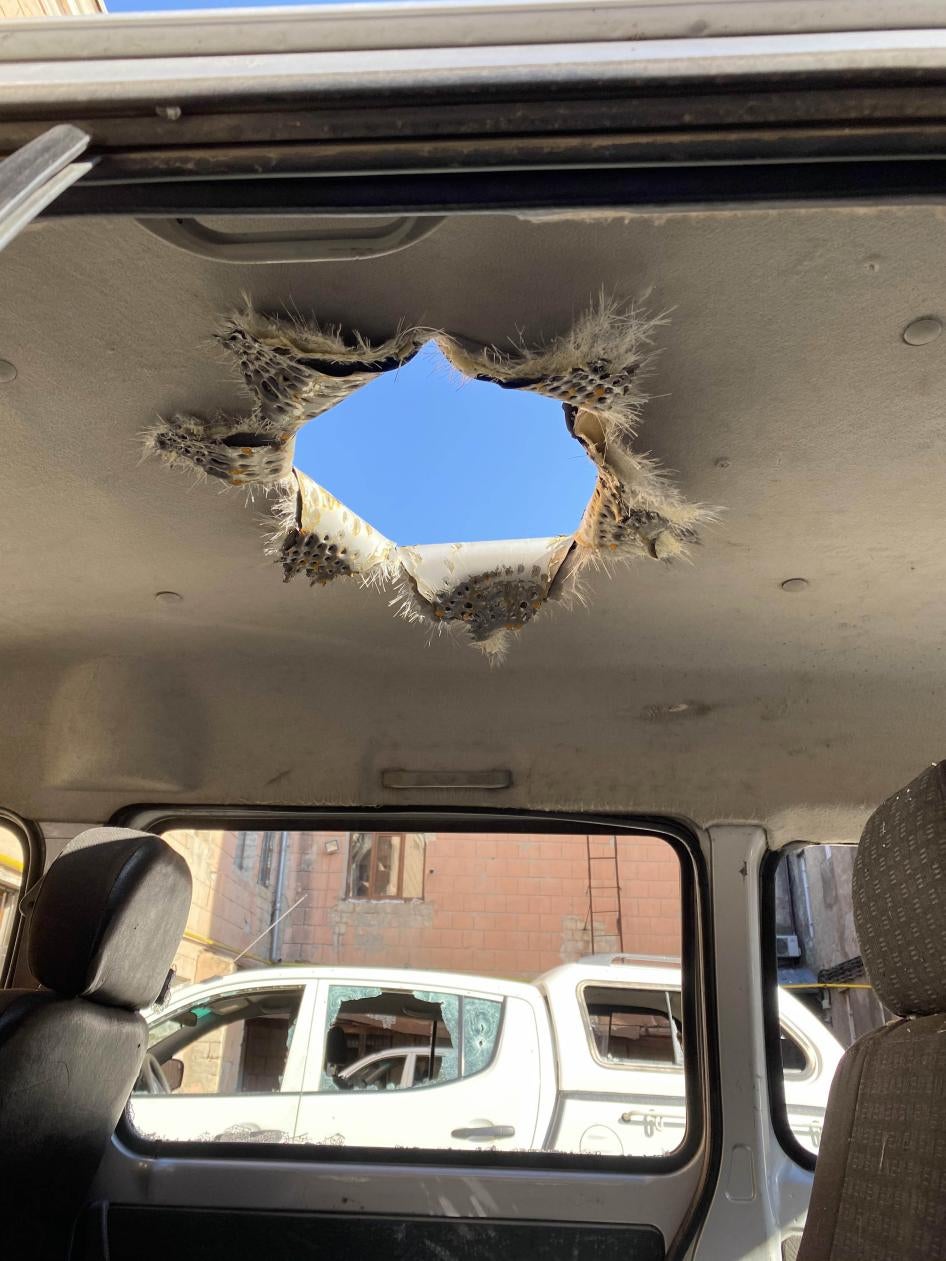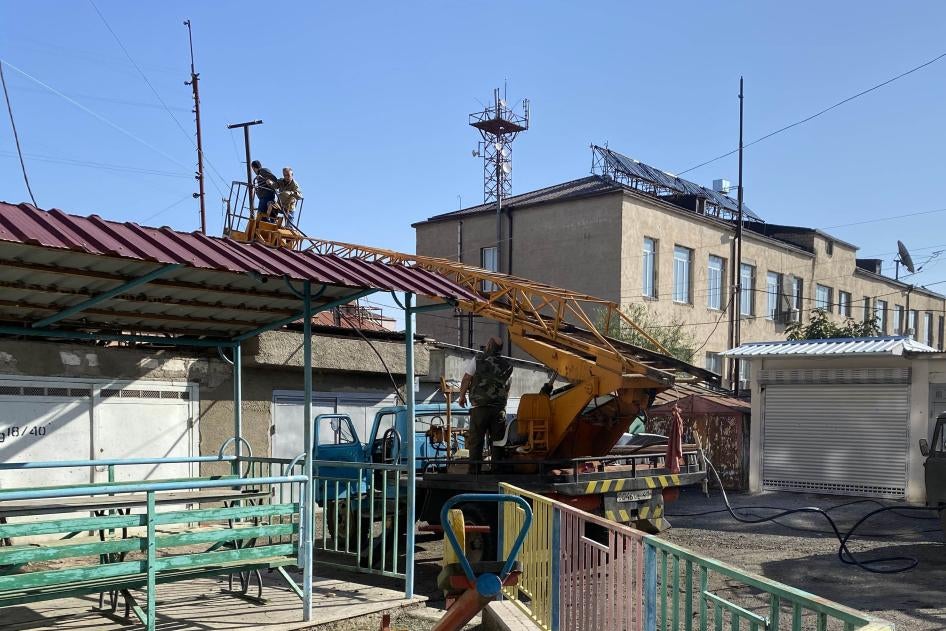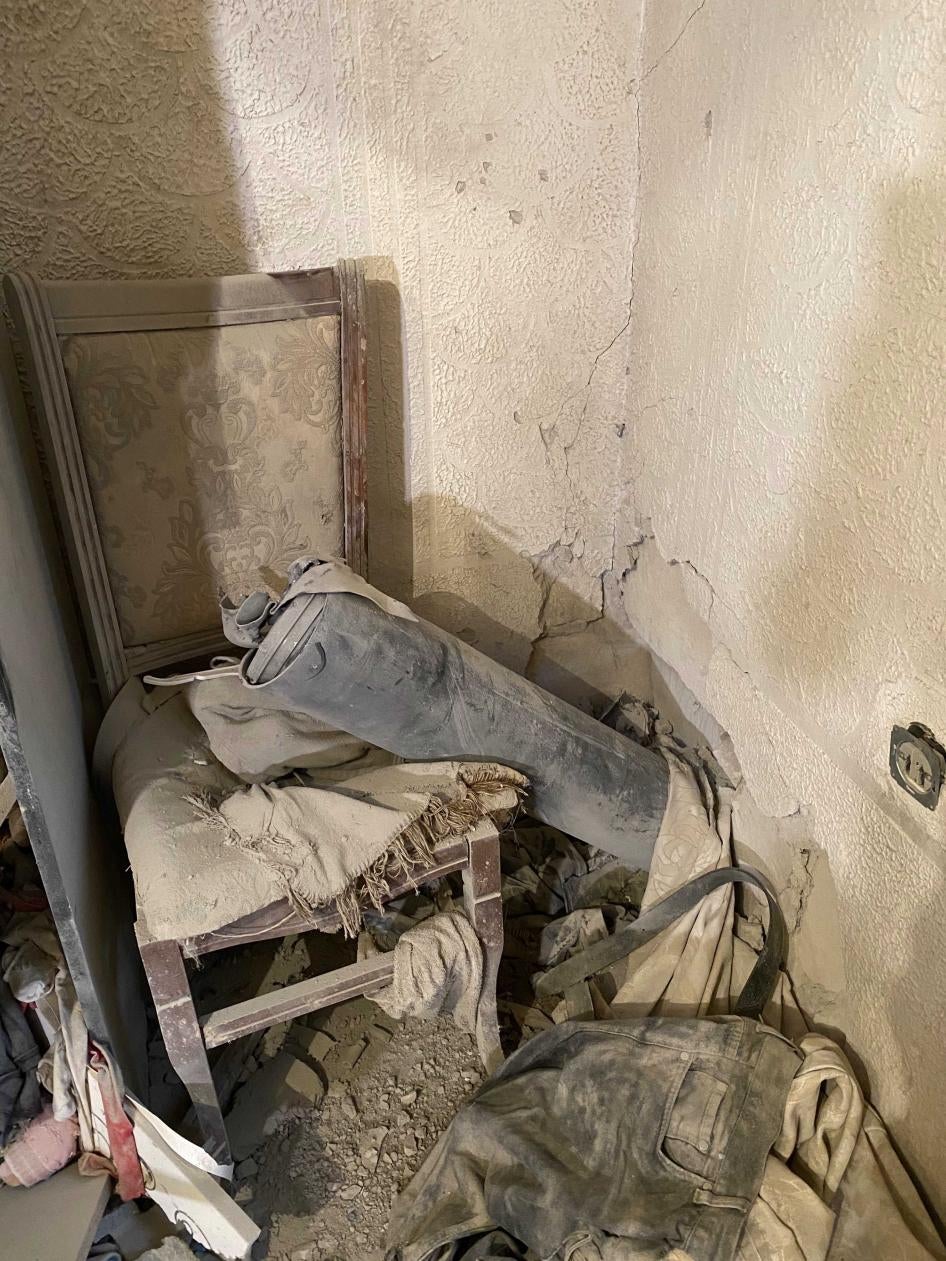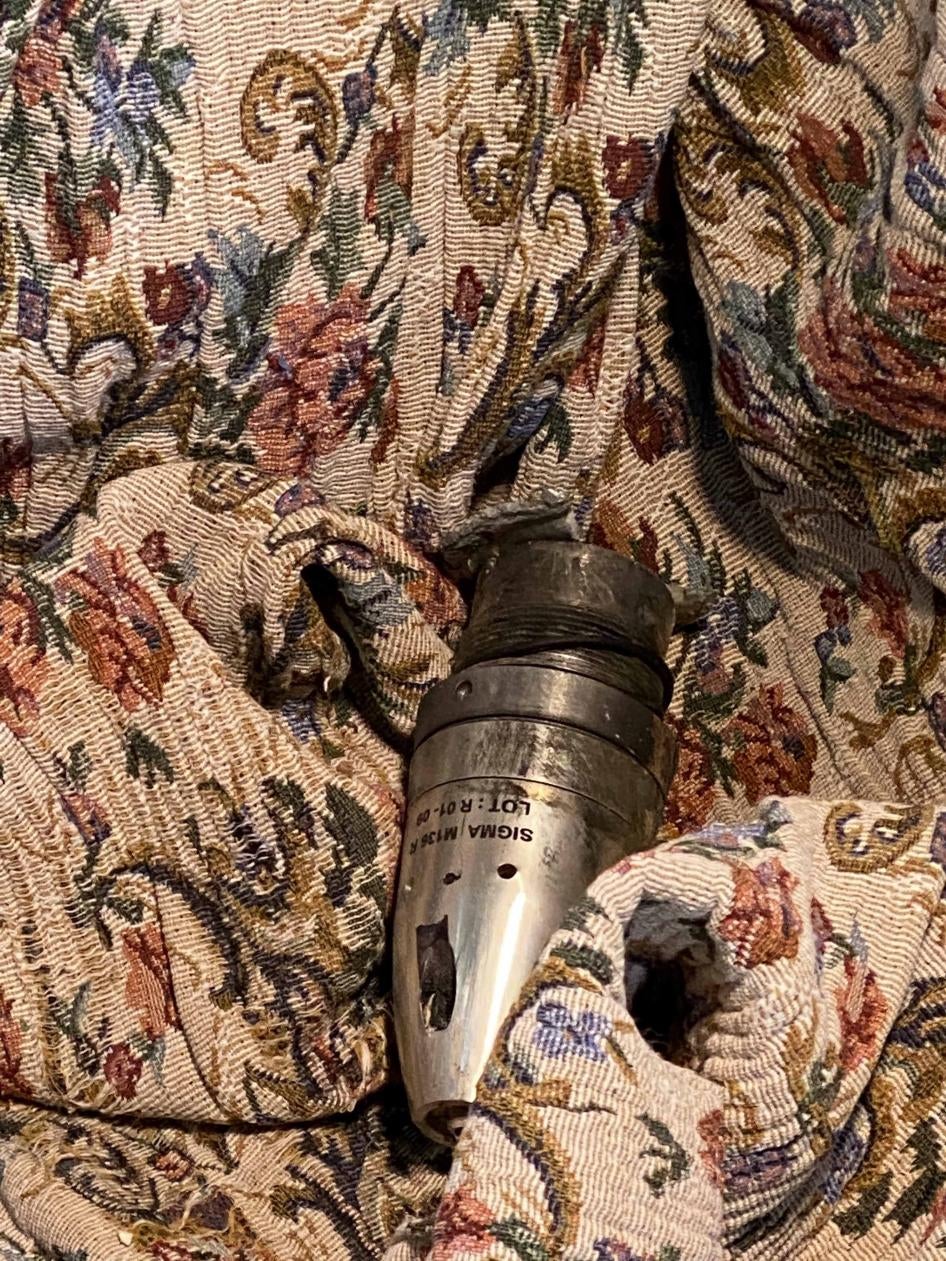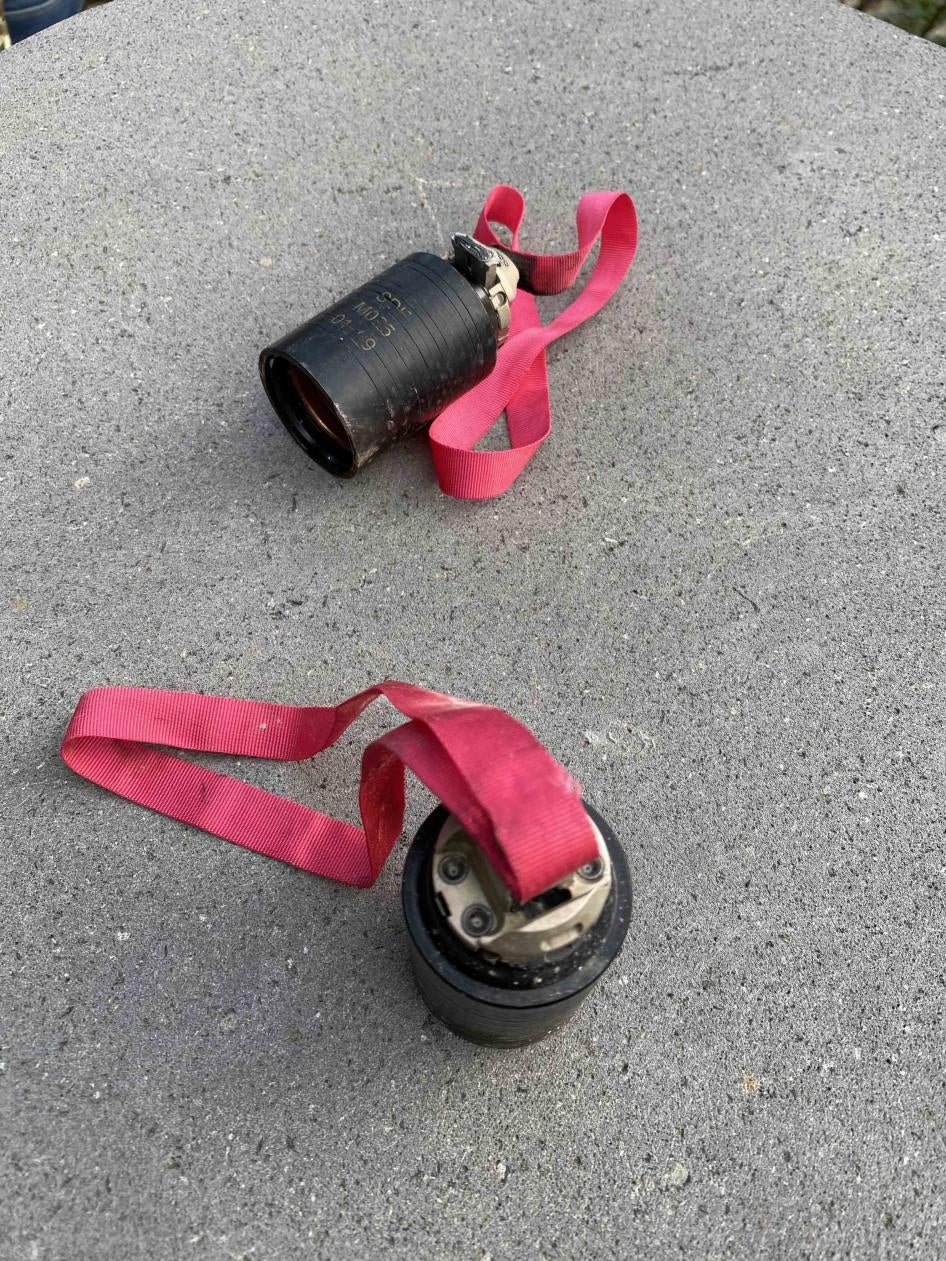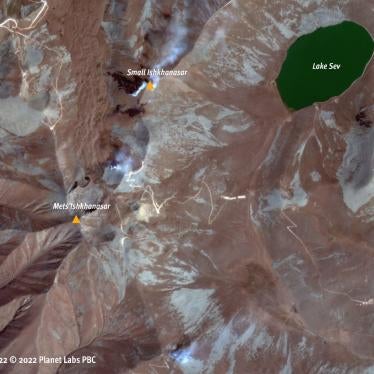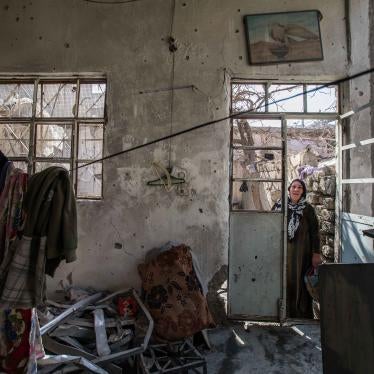Azerbaijan has repeatedly used widely banned cluster munitions in residential areas in Nagorno-Karabakh, Human Rights Watch said today. During an on-site investigation in Nagorno-Karabakh in October 2020, Human Rights Watch documented four incidents in which Azerbaijan used cluster munitions.
Fighting between Azerbaijan and Armenia and the de-facto authorities in Nagorno-Karabakh dramatically escalated on September 27, 2020. Two humanitarian ceasefires brokered by members of the Minsk Group of the Organization for Security and Co-Operation in Europe have failed to halt the fighting. According to authorities from all parties, scores of civilians have been killed or injured in attacks in Armenia, Nagorno-Karabakh, and Azerbaijan.
“The continued use of cluster munitions – particularly in populated areas – shows flagrant disregard for the safety of civilians,” said Stephen Goose, arms division director at Human Rights Watch and chair of the Cluster Munition Coalition. “Cluster munitions should never be used by anyone under any circumstances, much less in cities, due to the foreseeable and unacceptable harm to civilians.”
In the conflict over Nagorno-Karabakh, Human Rights Watch is investigating whether all sides of the conflict adhere to international humanitarian law, which requires armed forces to distinguish between combatants and civilians, and between military objects and civilian objects, at all times. As such, indiscriminate attacks are prohibited, including attacks which employ a method or means of combat which cannot be directed at a specific legitimate military target. Human Rights Watch has made repeated requests to the Azerbaijani government for access to conduct on-site investigations, but access has not yet been granted.
Human Rights Watch examined remnants of the rockets, impacts, and remnants of submunitions that exploded, as well as dud submunitions that failed to function at several locations in Stepanakert, Nagorno-Karabakh’s administrative center, which is called Khankendi in Azerbaijan. Human Rights Watch also examined photographs taken in the town of Hadrut of a rocket, impacts, and remnants of submunitions that exploded, and a dud submunition that failed to explode. Human Rights Watch also spoke to six people who witnessed the attacks. Azerbaijani officials have accused the Armenian side of using cluster munitions in this conflict, but Human Rights Watch has not independently verified those claims.
Residents of Stepanakert told Human Rights Watch that attacks using cluster munitions began on the morning of September 27 in a residential area no more than 200 meters from the office of the International Committee of the Red Cross.
A 69-year-old woman who was in her apartment on the fourth floor of a building next to where Human Rights Watch observed scores of the distinctive impacts of the M095 submunitions said the building began to shake around 7:15 a.m.: “The children started to scream and everyone was panicking when the bombs started coming down. We opened the windows and saw that the cars were burning. We saw that they had small pink things that were making them burn, so we ran down to the basement.”
She said that a number of submunitions did not explode and that people in the neighborhood covered them with sand from the children’s playground until emergency responders came the next day to secure and remove them. She said glass broken from the blasts injured a number of people in the neighborhood. Another resident told Human Rights Watch that dozens of vehicles were damaged.
On October 12, Human Rights Watch visited the site and, in addition to the distinctive impacts of the submunitions, Human Rights Watch observed several damaged and burned vehicles and numerous broken windows in nearby apartments and a shop located in the courtyard. However, the exact damage to the area done by the submunitions is unknown because another subsequent attack was carried out with a different munition in roughly the same location.
At least one more LAR-160 cluster munition rocket was fired roughly into the same area several hundred meters away. Human Rights Watch observed the remnants of a LAR-160 rocket, scores of the distinctive impacts of the M095 submunitions, the remnants of the pink-colored stabilization ribbons, and submunition fragments. Numerous buildings, private business, and markets had varying degrees of damage from the attack.
Human Rights Watch spoke to one worker for a nongovernmental group who observed a fire in a shop following an attack in this second neighborhood when he visited the site at approximately 11:20 p.m. on October 3. Human Rights Watch also reviewed a photograph taken by this witness that, according to the photograph’s metadata, was captured on October 3 at 11:20 p.m.
A video uploaded on the Telegram channel “Re:public of Artsakh” on October 4, captured another cluster munition rocket attack on Hakob Hakobyan Street in Stepanakert. Human Rights Watch spoke to two people who live on Hakob Hakobyan Street and witnessed the attack. One 55-year-old resident said that she was in her fourth-floor apartment during the attack. She said that some of the explosions occurred on the roof and ruptured the water pipes on the top of the building, causing water to run down from the upper floors. As a consequence, the water was shut off to the building.
Rescue services were able to clear the submunitions from the top of the building after several days and access to water was restored but there has been no electricity in the building since the attack. An individual familiar with the electrical grid told Human Rights Watch that they were working to restore electricity in the area but could only provide electricity to basements and shelters for the time being.
Human Rights Watch was not able to identify any military equipment or bases in the three neighborhoods where the attacks took place. Even if there had been, given the indiscriminate effects of cluster munitions, their use in a residential civilian setting is not permitted under the laws of war.
Human Rights Watch also examined 35 photographs and one video shared directly with Human Rights Watch from the town of Hadrut of a LAR-160 rocket and its fuse, impacts, and remnants of M095 submunitions that exploded, and dud submunitions that failed to explode in and around a home. According to the metadata of the media, they were recorded on October 3. Human Rights Watch verified the location of the video and photographs as taken in the town of Hadrut. On October 4, a video was uploaded on YouTube by the Armenian Service of Radio Free Europe/Radio Liberty that showed the same house and remnants.
Cluster munitions have been banned because of their widespread indiscriminate effect and long-lasting danger to civilians. Cluster munitions typically explode in the air and send dozens, even hundreds, of small bomblets over an area the size of a football field. Cluster submunitions often fail to explode on initial impact, leaving duds that act like landmines.
The 2008 Convention on Cluster Munitions comprehensively prohibits cluster munitions and requires their clearance as well as assistance to victims. Armenia and Azerbaijan are not among the treaty’s 110 states parties. Both say that they cannot accede to the treaty until the dispute over Nagorno-Karabakh is resolved. Both should take the necessary steps to join the Convention on Cluster Munitions without delay, Human Rights Watch said.
Regardless of specific treaty obligations, all parties to the conflict are bound by the Geneva Conventions and customary international law and must abide by the fundamental principles of international humanitarian law, which requires armed forces to distinguish between combatants and civilians, and between military objects and civilian objects, at all times. It is also forbidden to carry out indiscriminate attacks or attacks that cause excessive civilian damage to the anticipated concrete military advantage.
“The repeated use of cluster munitions by Azerbaijan should cease immediately as their continued use serves to heighten the danger for civilians for years to come,” Goose said.
Additional information about cluster munitions attacks in Nagorno-Karabakh
Human Rights Watch identified the remnants of Israeli-produced LAR-160 series cluster munition rockets and unexploded M095 dual-purpose submunitions in Stepanakert and Hadrut. Each rocket carries 104 submunitions and each submunition is equipped with a self-destruct mechanism. Azerbaijan received these surface-to-surface rockets and launchers from Israel in 2008–2009. Neither Armenia, nor Nagorno-Karabakh de-facto authorities, are known to stockpile cluster munitions but they possess multi-barrel rocket launchers capable of delivering these weapons.
Human Rights Watch identified the Israeli-produced M095 dual-purpose submunition in each location. When this submunition detonates on impact, it produces lethal pre-formed metal fragments and a jet of molten metal intended to destroy vehicles and materiel. Human Rights Watch observed hundreds of the distinctive impacts of M095 submunitions as well as remnants of the pink-colored nylon stabilization ribbons in three neighborhoods in Stepanakert.
On October 13, Human Rights Watch visited the site where the witness saw and photographed the burning shop at 11:20 p.m. on October 3 and observed the same scorched building visible in the photograph and at least three pink stabilization ribbons a few meters away from the building as well as numerous distinctive impacts consistent with M095 submunitions. Human Rights Watch found remnants of a LAR-160 rocket 10 meters from the building and observed impacts to the roof of the building that were consistent with kinetic damage. According to available satellite imagery, the attack took place between September 27 and October 8. On October 8, the imagery shows damage to the building that is consistent with fire.
In the attack on Hakob Hakobyan Street, the distinctive auditory signature of at least three separate rockets dispersing payloads of submunitions, and their subsequent detonations can be heard in the video of the attack, believed to have been filmed by a vehicle’s dashcam. On October 12, Human Rights Watch visited the site where the video was taken and counted over 100 individual impacts on the same street. Human Rights Watch also observed scores of submunition impacts on immediately adjacent streets and on rooftops of office and residential buildings on several adjacent streets within a 100-meter radius. In a separate visit on October 13, Human Rights Watch found the remnants of a LAR-160 series rocket less than 100 meters from the location the video of the attack was taken. Human Rights Watch observed damage to power lines, children’s playgrounds, vehicles, businesses, homes, the main post office, and the Karabakh Telecom building.
